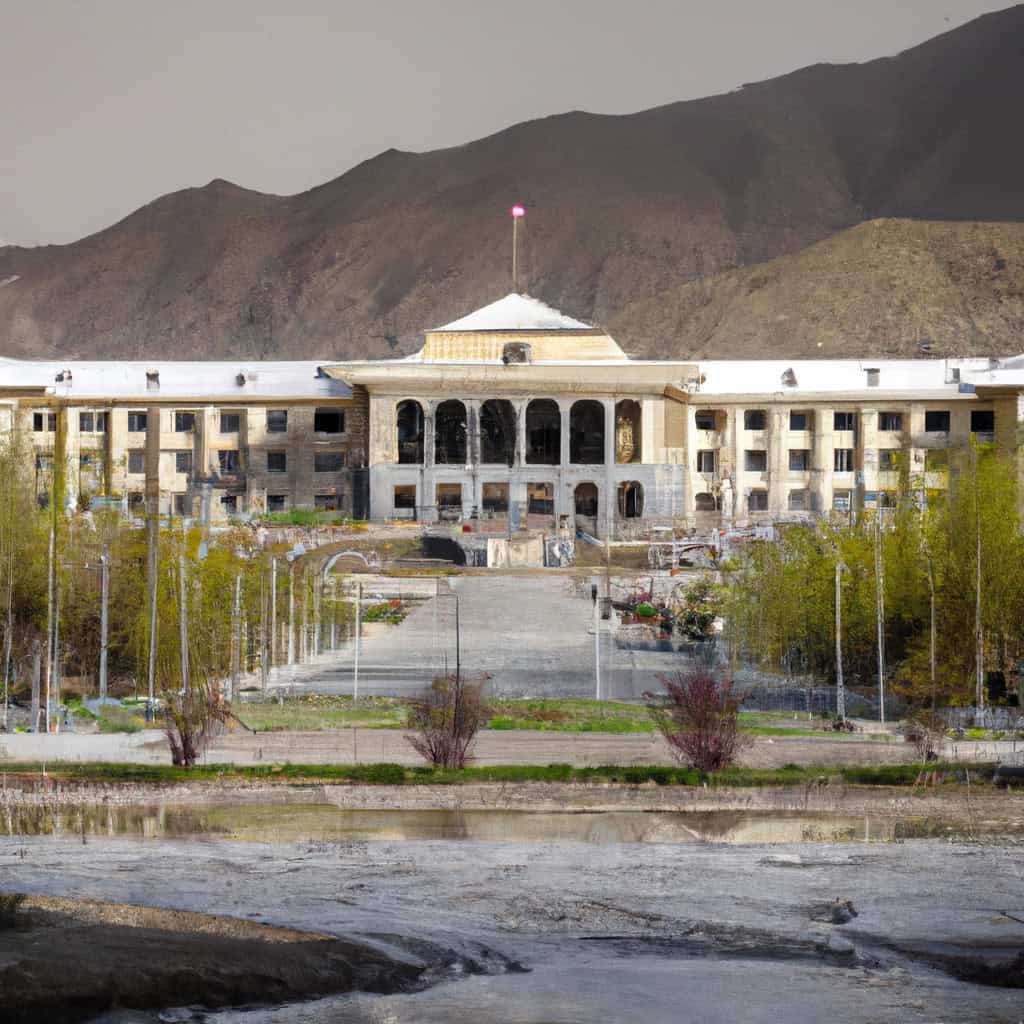Arg Presidential Palace in Kabul, is one of many fascinating sites that both foreign visitors and local tourists can explore while they visit Afghanistan and exploring Kabul Province. Have you ever thought about observing history’s footprints in a place still very much imprinted in the world’s present? That’s the beauty of Arg in Kabul. Let’s delve into the enchanting chronicles of this landmark, the Arg Presidential Palace.
Built in the 19th century under the rule of Amir Abdul Rahman Khan, Arg offers a distinctive glimpse into Afghanistan’s rich, unique past. Not just the President’s abode, Arg is an emblem of Afghani sovereignty and pride. It symbolizes Afghanistan’s history, grandeur, and resilience. Overlooking the city, this grand complex feels like a living, breathing time capsule.
Arg Presidential Palace Most Important Events
- The Construction of Arg: The palace was built around 1880 by Amir Abdul Rahman Khan. This marked an era of modernization in Afghanistan.
- The Transformation under King Zahir Shah: Under King Zahir Shah in the mid 20th century, Arg underwent significant modifications and extensions, echoing the ruler’s forward-thinking ideals.
- The Takeover by Taliban: The nuanced political saga of Arg took a dramatic turn when for a short period in 1996, it was controlled by the Taliban. This starkly different phase added a new chapter to its ever-evolving history.
History of Arg Presidential Palace in Kabul
Built with considerable thought and craftsmanship, Arg has withstood turbulent times to retain its monumental status in Kabul. Constructed primarily of wood and stucco in the then-prevalent neo-classical architectural style, its original purpose was as a citadel providing a panoramic view of the entire city beneath it.
Throughout different reigns, Arg underwent consistent modifications, reflecting the evolving socio-political landscape of Afghanistan. King Amanullah extended Arg during the 1920s, adding several new buildings and moving his main residence within the complex.
However, Arg’s dramatic evolution was under King Zahir Shah. During his reign (1933-1973), numerous additions including new governmental departments, the National Archives, and the Kabul museum were all housed in Arg, converting it into a bureaucratic hub.
Why It’s Important to Afghan History
Arg stands as a testament to Afghanistan’s complex, multifaceted history. Over the years, it has been both a witness and contributor to the country’s crucial political shifts, symbolizing the nation’s ever-changing fate.
Aside from being the Presidential Palace, Arg has played vital roles in shaping Afghanistan’s identity. It has been a hub of administrative decisions, a birthplace of crucial socio-political reforms, and a beacon of the nation’s resilience amidst adversities. Truly, Arg is more than just a building; it is an embodiment of Afghanistan’s spirit.
Why to Visit Arg Presidential Palace
Visiting Arg is an immersion in Afghanistan’s rich historical tapestry. Its architectural beauty coupled with a horizon of endless views over the city make it a must-see in Kabul. The striking design combines elements of both Western and Eastern architectural styles, creating a unique visual experience.
Nestled within lush gardens and scenic beauty, Arg offers a serene yet compelling experience. Each corner whispers tales from the past, making it a haven for history enthusiasts.
- Witness the Afghani architecture that has withstood the test of time.
- Explore the lush gardens engulfing the complex.
- Marvel at the panoramic city views from the complex.
- Learn about Afghanistan’s rich history through the palace’s journey.
- Experience the serene ambiance amidst the bustling city.
Arg is situated in the city center, accessible by car or public transport. The ideal season to visit is during spring or autumn when Kabul’s weather is at its best.
Cultural & Tourist Significance
From a cultural perspective, Arg holds immense significance. As the heart of political power, Arg’s influence permeates Afghan society, shaping national narratives and identities. It’s not just a palace, but a stage that has seen Afghanistan’s historical drama unfold.
Arg also attracts a heap of tourists eager to understand Afghanistan’s rich historical and political journey captured within its walls. Each room, each corridor, tells a unique story, offering a historical pathway to the uninitiated.
Additionally, Arg ranks high on tourist itineraries due to its majestic views. Enclosed within the bustle of Kabul, it stands as an oasis, offering a calm, tranquil space amidst the city’s hustle and bustle.
Interesting Facts
Arg, apart from its known grandeur, has its share of interesting facts. The word ‘Arg’ is derived from Dari, the local language in Afghanistan, and means ‘citadel’ or ‘fortress’, which shows the original intent behind its construction.
Another fact some people might not know is that Arg wasn’t always a singular structure. Initially, it was two separate buildings constructed at different times, which were later connected by King Amanullah.
The last fascinating tidbit is the survival of Arg. Despite suffering great damage during the civil war, it stood firm and is still in use today, exhibiting Afghanistan’s unyielding spirit.
In conclusion, Arg Palace is an inseparable part of Afghanistan’s historical, political, and cultural identities. Its compelling past, architectural grandeur, and the wisdom it has to offer make it a place worth visiting. So, when in Afghanistan, take a day to unravel the mysteries held inside the majestic Arg.

